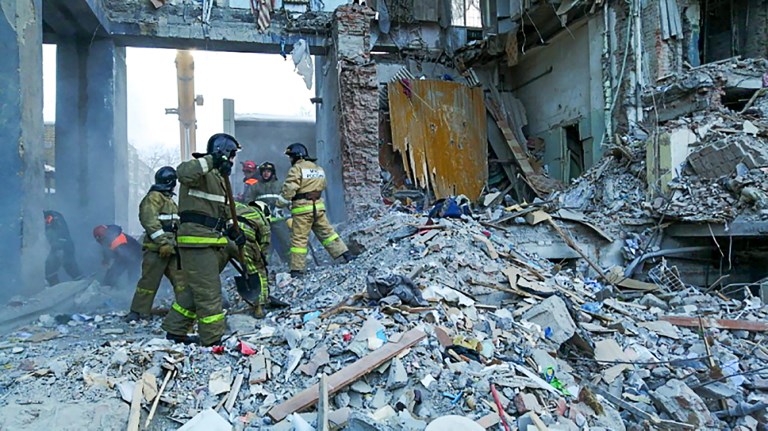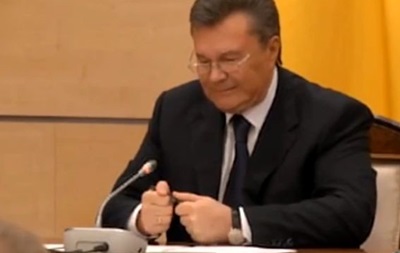M.N.: The link between Crime, Terrorism, and Migration is very real! "Washington Post", get rid of your obvious and misleading liberal bias and face the truth. - 7:31 AM 1/7/2019

The link between Crime, Terrorism, and Migration is very real!
"Washington Post", get rid of your obvious and misleading liberal bias and face the truth. There is no doubt, in my very humble opinion, that in the present circumstances the borders (all of them, physical and virtual) have to be strengthened. "Wall or no wall", this country has to protect itself from this pre-orchestrated, planned, hostile "invasion". This issue, in a long term perspective, affects the demographic composition, and, inevitably, the mind, the soul, and the essence of this country. The comprehensive immigration reform is needed to bring the order and sanity into this system. It is a bipartisan issue. The best way to deal with it is to assist the future migrants at the places where they already are, be it their own or the third countries, and to help them with the adjustment and making the rational and orderly plans for emigration or non-emigration. It will also be much more efficient, including the comparative costs of the prospective interventions vs. non-interventions options for the migrants' assistance.
In its present state, the dysfunctional US Immigration system does breed crime and definitely linked to it, the courtesy of the various Intelligence Services, among the other factors, the terrorist activity.
Do the methodologically correct studies to reveal these connections!
It is also difficult not to see the larger and the deliberate design (I wish I would know, by whom) which can be described by this imaginary phrase: "You, Americans, deal with your own problems at your southern borders, and we will make sure that you continue having these problems; and we: the Germans, the New Abwehr, the Russians, the "Europeans" will deal with our own problems at our southern borders, which includes the Middle East, Syria, Afghanistan", etc., etc. Very straightforward and clear, almost German in its artificial simplicity and squareness, design.
The Strasbourg attack was the latest demonstration of the "Terrorism - Crime - Migration Nexus", as it was aptly described and defined.
The Strasbourg attack was the latest demonstration of the "Terrorism - Crime - Migration Nexus", as it was aptly described and defined.
The recent events (US withdrawal from Syria , (even if largely symbolic but telling: "А вас тута не стояло"), and the planned withdrawal from Afghanistan confirm this line of thought further.
"Theories of a crime-terror nexus are well established in the literature. Often conceptualised along a continuum, relationships between organisations range from contracting services and the appropriation of tactics, to complete mergers or even role changes. Recent irregular migrant movements have added to the nexus, providing financial opportunities to criminal enterprises and creating grievances and heated debate that has fuelled the anger of ideological groups."
This pattern is reported for Europe but there should not be any significant reasons to believe that this constellation of forces and factors and their dynamics are any different in the Western hemisphere.
The Statistics should help to clarify the issues, not to obscure them. And the reporters might be tempted to spin the numbers into any direction they want, just like anyone else. Let the specialists, including the statisticians, comment on these matters.
The incompleteness and narrowness of the press reports like the one linked above only throws more oil into the flames and allows if not justifies the Trump's criticism of his press coverage as the "Fake News & totally dishonest Media" and the "crazed lunatics who have given up on the TRUTH!".
(What a horrible crime! Right out of the mouth of The TRUTH Teller In Chief!)
As far as "the enemy of the people", this might be the more debatable attribution. So far. (The New Abwehr's control of the Global Mass Media notwithstanding.)
"Theories of a crime-terror nexus are well established in the literature. Often conceptualised along a continuum, relationships between organisations range from contracting services and the appropriation of tactics, to complete mergers or even role changes. Recent irregular migrant movements have added to the nexus, providing financial opportunities to criminal enterprises and creating grievances and heated debate that has fuelled the anger of ideological groups."
This pattern is reported for Europe but there should not be any significant reasons to believe that this constellation of forces and factors and their dynamics are any different in the Western hemisphere.
The Statistics should help to clarify the issues, not to obscure them. And the reporters might be tempted to spin the numbers into any direction they want, just like anyone else. Let the specialists, including the statisticians, comment on these matters.
The incompleteness and narrowness of the press reports like the one linked above only throws more oil into the flames and allows if not justifies the Trump's criticism of his press coverage as the "Fake News & totally dishonest Media" and the "crazed lunatics who have given up on the TRUTH!".
(What a horrible crime! Right out of the mouth of The TRUTH Teller In Chief!)
As far as "the enemy of the people", this might be the more debatable attribution. So far. (The New Abwehr's control of the Global Mass Media notwithstanding.)
Michael Novakhov
7:01 AM 1/7/2019
Links:
Links:
The Trump administration’s misleading spin on immigration, crime and terrorism
PERSPECTIVES ON TERRORISM Volume 12, Issue 5
Migration, Transnational Crime and Terrorism: Exploring the
Nexus in Europe and Southeast Asia
by Cameron Sumpter and Joseph Franco
October 2018
Migration, Transnational Crime and Terrorism: Exploring the
Nexus in Europe and Southeast Asia
by Cameron Sumpter and Joseph Franco
October 2018
Volume 12, Issue 5
Migration, Transnational Crime and Terrorism:
Exploring the Nexus in Europe and Southeast Asia by Cameron Sumpter and Joseph Franco
Abstract
Theories of a crime-terror nexus are well established in the literature. Often conceptualised along a continuum, relationships between organisations range from contracting services and the appropriation of tactics, to complete mergers or even role changes. Recent irregular migrant movements have added to the nexus, providing financial opportunities to criminal enterprises and creating grievances and heated debate that has fuelled the anger of ideological groups. In Europe, terrorist organisations have worked with and sometimes emulated organised crime syndicates through involvement in the trafficking of drugs, people, weapons and antiquities. In Southeast Asia, conflict areas provide the backdrop for cross-border drug trafficking and kidnap-for-ransom activities, while extremist groups both commit crimes for profit and target criminals for recruitment. Keywords: Crime-Terror nexus, organised crime, terrorism, migration, Europe, Southeast Asia
-
Fake News & totally dishonest Media concerning me and my presidency has never been worse,” Trump said in the first of the tweets. “Many have become crazed lunatics who have given up on the TRUTH!”
‘Crazed lunatics’: Trump again attacks the news media as ‘the enemy of the people’ - WP - 1.7.19
ANALYSIS: STRASBOURG ATTACK FITS PREVIOUS MODEL OF CRIMINAL-TERROR NEXUS IN EUROPE
The problem appears to be the gap between surveillance of members of the criminal-terrorist extremist nexus, and prosecuting perpetrators for crimes such as acquiring illegal firearms.
BY SETH J. FRANTZMAN DECEMBER 12, 2018 10:59
> Ex-IDF deputy chief: Beware of Gulf states, their values are different than ours
> Report: Strasbourg residents in hiding, 'scared and locked in their homes'
Share on facebook Share on twitter
Gunman kills at least two in Strasbourg, December 12, 2018 (Reuters)
Strasbourg
Trending
00:183.56K views
BY YONAH JEREMY BOB IDF INTEL CHIEF: WE MAY NOT FIND ALL ATTACK TUNNELS ‘We’ve thwarted Hezbollah invasion ambitions’
Cancel
Trending
01:061.74K views
Bennet and Shaked announce a new right-wing party, December 30, 2018 (Courtesy)
NEW
01:502.22K views
COCKPIT COVER OF IAF F-15 CUT OFF AT 30,000 FEET, PILOT AND NAVIGATOR SAVED
HOT
06:141.33K views
Netanyahu to Bolton: Time for U.S. to recognize Golan Heights in Israel
HOT
01:031.52K views
Hundreds protest after fifth suspect in Jewish terrorism case arrested By TAMAR BEERI,JERUSALEM POST STAFF January 6, 2019
Gunman kills at least two in Strasbourg, December 12, 2018 (Reuters)
On Tuesday, Cherif Chekatt, 29, shot at a crowd next to a Christmas market in central Strasbourg killing two, while a third person was brain-dead and being kept alive on life support. Six more victims are fighting for their lives.
As of press time Wednesday, French security forces are still hunting the suspect, who is known to counter-terrorism services. He initially fled in a taxi from the city of 270,000 which is located near the German border.
Read More Related Articles
'The North American government is on the path of confrontation with Cuba'
Vehicle rams into New Year's crowd in Tokyo, injuring at least nine
Ivanka Trump Cuts Asking Rent for Manhattan Condo to $13,000 (Mansion Global)
Recommended by
According to reports, the perpetrator acted alone although four people were detained in connection to the attacks. He used a gun and knife. Security has been increased at Christmas markets. According to BBC, he was on a “fiche S” watch list for “potential threats to national security.” He shouted religious extremist slogans during the course of the attack.
This conjures up memories of the murder of 12 people in the 2016 Christmas market attack in Berlin. The perpetrator in the Germany attack, who was born in Tunisia in 1992, had been in prison in Italy where he was allegedly “radicalized.” German security services had warned of his terrorist connections in the spring of 2016, and he was supposed to be deported.
According to France 24, the suspect in the Strasbourg shooting was also known to police. Born in Strasbourg, he was confronted by soldiers who have been deployed in French cities as part of Operation Sentinelle. These soldiers were deployed after the November 2015 attacks in Paris that killed 130. The Interior Minister Christophe Castaner has said the suspect “sowed terror” at three places in the city. The reference to “three places” leaves more questions about what happened. It appears that the reference is to the suspect coming into contact twice with security forces and exchanging fire with them.
As with many attacks in Europe over the last several years, the Strasbourg suspect was already known to security and police. He had served a sentence and been convicted of 27 unspecified crimes in France, Switzerland and Germany, according to reports. In 2016 he was “flagged by anti-terrorist services,” France 24 reported. “He had been reported by the General Directorate for Internal Security.”
The intelligence agency had visited him in prison and taken account of his “religious proselytism.” Yet, even with this long rap sheet and being monitored by security forces, he carried out an armed robbery on Tuesday before the attack. During a search of his apartment, grenades were found which raises the question how a man who was well known for violent proclivities and apparently religious extremism was able to acquire his arsenal.
The attack took place one km. from the European Parliament, which has taken the attack in stride. Antonio Tajani, the president of the parliament, tweeted the parliament would not be intimidated. “Let us move on,” he wrote. But residents and others may want more answers. One man told the BBC that he had attempted to aid a victim of the attack, waiting for 45 minutes for an ambulance to arrive. “A doctor told us on the phone that it was senseless,” to continue to aid the dead victim. This leads to questions about why medical services took so long to reach the scene.
The attack in Strasbourg is among the most serious incidents this year in Europe, after a spate of ISIS-inspired attacks between 2015 and 2017. However the background of the alleged perpetrator appears to fit a much larger pattern, particularly in France. Mohammed Merah, the perpetrator of the Toulouse and Montaubon attacks, was born in Toulouse. A petty criminal, he then went to Afghanistan and Pakistan and was placed under surveillance in 2006, and again in 2009. He went to Egypt and Pakistan, and was followed by security service upon his return in 2011. Yet despite all this he was able to acquire weapons and between March 11 and 19 went on a spree of killing, targeting soldiers and then a Jewish school.
One of the suspects in the November 2015 Paris attacks had a similar long rap sheet. Arrested for armed robbery in 2010, he was convicted twice for theft, breaking and entering once, and theft again in 2012. Then the suspect went to Syria, engaged in extremism, and returned to Europe. A second member of the cell that planned the 2015 Paris attack was named Abdelhamid Abaaoud. He too was arrested in 2010 for breaking into a garage, spent time in three prisons, and then went to Syria. He was convicted of abduction, and video in Syria showed him next to “bloody corpses” as he bragged he had loaded trucks with the bodies of “infidels.” Nevertheless, he was able to return to Europe via Greece and is alleged to have helped plan four attacks in the spring of 2015 before being tracked down after the Paris attacks.
Similarly the 2016 Brussels terror attack was carried out by men who had a long history of criminal and terrorist activity. Ibrahim El Bakraoui had been involved in a robbery and gun battle with police in 2010. Released in 2014, he traveled to Turkey before returning to Belgium. Another perpetrator, named Khalid El Bakraoui, had been involved in “several” carjackings and had been caught with numerous illegal AK-47s. He was also convicted of “robbery and kidnapping” in 2009. Yet for all these crimes he received only several years in prison.
Almost every major attack in Europe in the last several years has fit this pattern. The 2017 Stockholm truck attack was also carried out by a perpetrator who had connections to jihadist groups and was involved in other criminal activities prior to the attack. He was also known to security services.
French authorities have not released a motive behind the Strasbourg attack although counter-terrorism prosecutors have opened and investigation. They had also not released the suspect’s name or a photo by Wednesday morning, despite there being a major manhunt. The French deputy interior minister was quoted in Reuters saying it was not clear if the suspect was still in France. This will lead to many questions about how the man was able to obtain weapons and why he was able to elude police throughout the day Tuesday before the attack, despite being wanted for another crime.
The problem for security services in many European countries still appears to be the gap between surveillance of members of the criminal-terrorist extremist nexus, and prosecuting perpetrators for crimes such as acquiring illegal firearms. In almost every incident, the perpetrators are known and some have been involved in numerous serious crimes. Yet they have received short sentences and usually been able to go on to commit new crimes while acquiring weapons. There also appears to be an ongoing issue involving coordination between countries. If the suspect in Strasbourg was able to get to Germany, despite clashes with security forces, that will lead to questions about how quickly the Germans were alerted. The suspect in the Berlin Christmas market attack also was able to cross numerous borders before being tracked down in Italy. Why police did not release the photo, description or details about the perpetrator more than 12 hours after the incident was also unclear. Eventually these details will be explained, but the incident shows that despite deploying soldiers as part of the wide-ranging Sintinelle operation, there are issues relating to response time and when to interdict suspects during the process of monitoring them.
-












Comments
Post a Comment